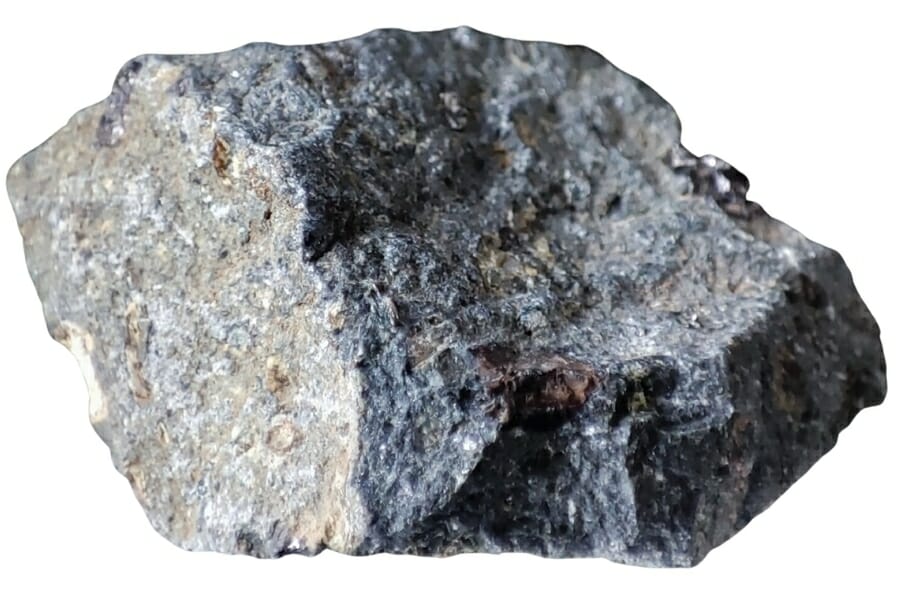Kimberlite is a special kind of rock that sometimes contains diamonds. People hunting for diamonds often look for kimberlite to increase their chances of finding these precious gems.
However, telling real kimberlite from fake or other rock types can be tricky. To identify real kimberlite, you must examine the rock’s color, texture, and other features.
You can also use special tests and equipment. It’s like being a rock detective, searching for clues telling you if you have found the right rock.
This guide will detail the steps and tests you can use to find real kimberlite. This will make sure that diamond hunters are on the right track!
Understanding Natural Kimberlite And Why Fakes Are Common
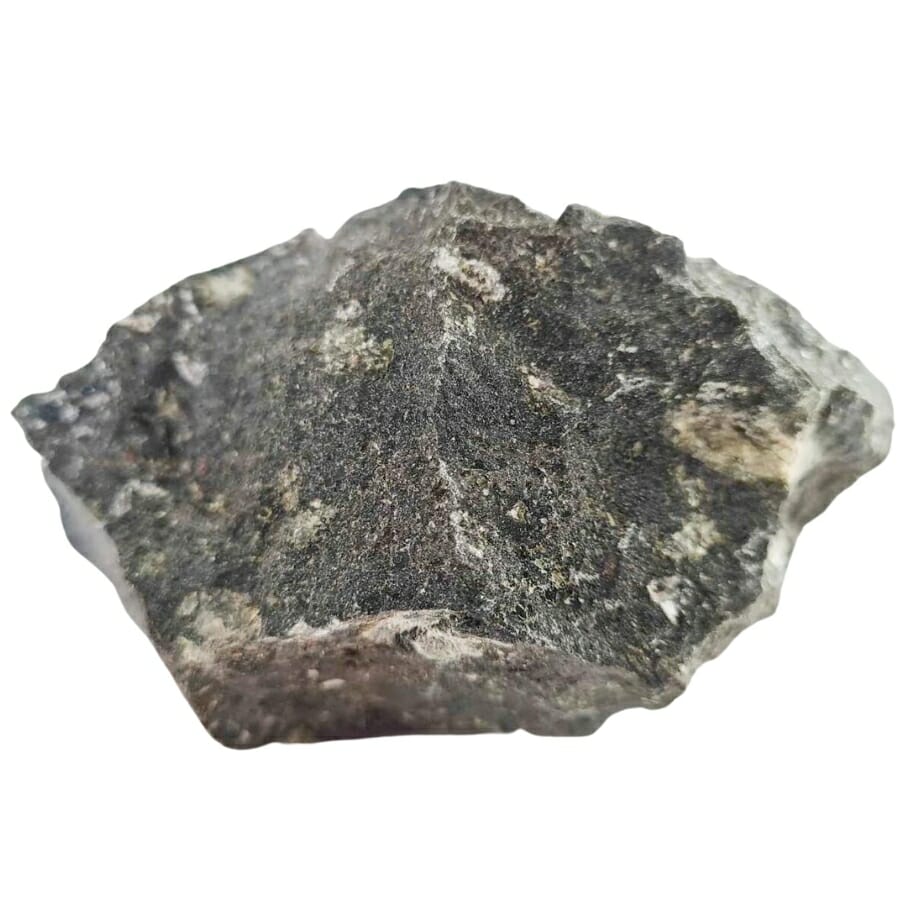
Kimberlite is a type of rock from a very deep place in the Earth. It forms in the Earth’s mantle, the thick rock layer between the crust and the core.
Magma, which is hot molten rock, rises through cracks in the mantle and reaches the surface. This is how kimberlite is made. As it rises, it picks up pieces of rock and sometimes even diamonds from the Earth’s mantle. When the magma gets to the surface, it cools and becomes what we call kimberlite.
One of the things that makes kimberlite unique is that it’s made up of many different minerals. It sometimes has diamonds and usually has olivine and garnet.
Kimberlite is usually bluish, gray, or greenish and rough and crumbly. Some of the minerals in it can also make it a little magnetic.
Diamonds are often looked for and mined from Kimberlite. Because diamonds are rare and valuable, places where kimberlite is found can become essential mining areas.
Miners get excited when they find kimberlite because there is a chance they will also find diamonds. Kimberlite means that the right conditions are deep underground for diamonds to form in the area.
Most of the value of kimberlite comes from the fact that it can hold diamonds. Diamonds are beautiful and wanted for jewelry, but they are also the hardest known natural material used in cutting tools and other industrial uses.
Also, the other minerals found in kimberlite have their uses and worth. So, mining kimberlite can bring in many useful things, making this rock very important and in high demand.
Why you’re seeing more fake kimberlite these days
More fake kimberlites are showing up on the market, which could be because real kimberlite is so expensive because it often contains diamonds.
People might be trying to make quick money by selling fake kimberlite to those who don’t know how to tell the real from the fake. The idea of finding diamonds can excite many buyers, making them easy targets for fraud.
Additionally, with the internet, it’s easier now for sellers to reach buyers and sell fake stones. Also, without proper regulations or checks, it can be easy for fake kimberlite to be sold as real, tricking even some experienced buyers.
The problem of fake kimberlites shows how hard it can be to make money in the gem and mineral market, where high prices often lead to scams.
How To Identify Real Kimberlite
Because real kimberlite has unique properties that are often linked to the presence of diamonds, it can be hard to tell if it’s real or not. You should learn about its unique qualities for precise identification and talk to a geologist.
People can tell the difference between real kimberlite and other rocks or fake specimens by looking at them carefully and, in some cases, using scientific tests. This makes sure that the kimberlite is real and has value.
Some fake kimberlites are easy to spot, but others can fool even the most experienced eye. To be good at identifying rocks, you need to know a lot about what makes each one different.
Having more information about Kimberlite will help you make an intelligent purchase and see its real value and beauty.
Do a hardness test
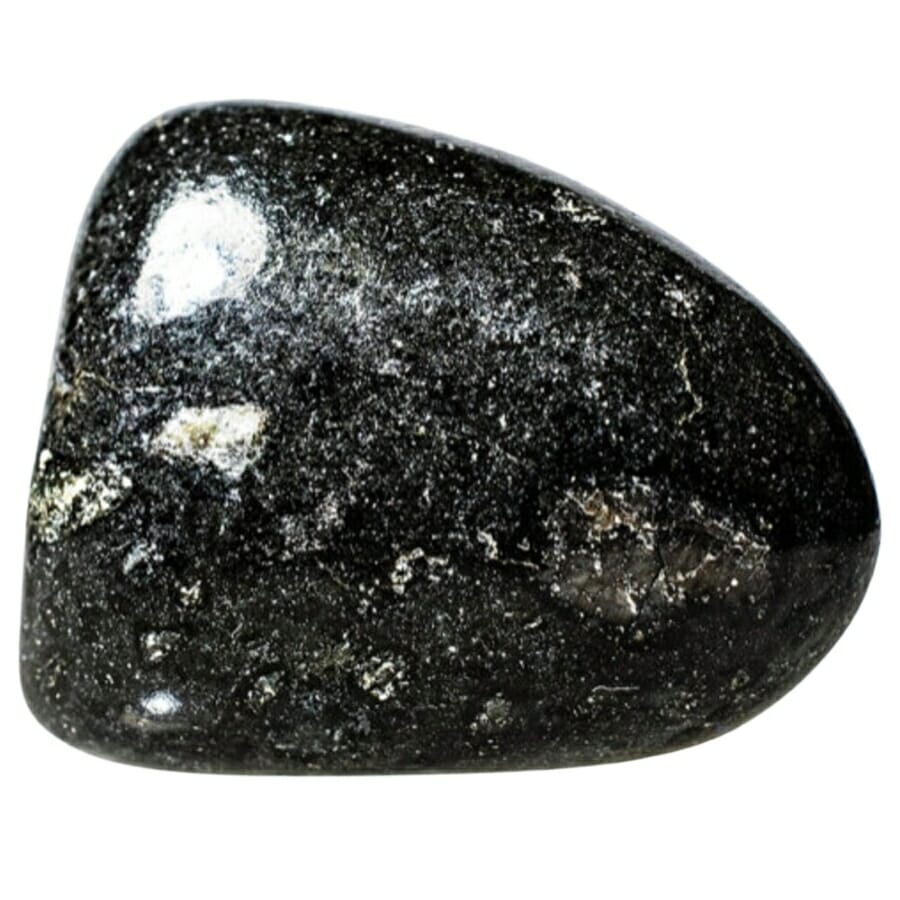
Putting a kimberlite rock through a hardness test is like a detective looking for clues to solve a case. In this case, we want to know if our rock is a real kimberlite. The hardness test is easy and fun, but you should do it outside or in a workspace because it can get messy.
You’ll need a scratch test kit with different tools to scratch the rock. The goal is to see how easy it is to scratch the rock. Scientists use the Mohs scale to measure how hard minerals and rocks are.
Real kimberlite is about a 6 or 7 on this scale. So, it shouldn’t scratch as easily as rocks with a lower number on the Mohs scale, like talc or gypsum.
Start by trying to scratch the rock with the softer tools in your kit. If that doesn’t work, move on to the harder tools. It’s like going up a ladder, where each step is a harder tool trying to scratch the rock.
If the kimberlite is real, the softer tools won’t do much, but tools as hard as or harder than the kimberlite will leave a scratch.
Remember that the results may not give you a clear answer because other rocks can be as hard as kimberlite. It’s just one piece of the puzzle, so you might need to do more tests or talk to an expert to be sure.
Examine its texture
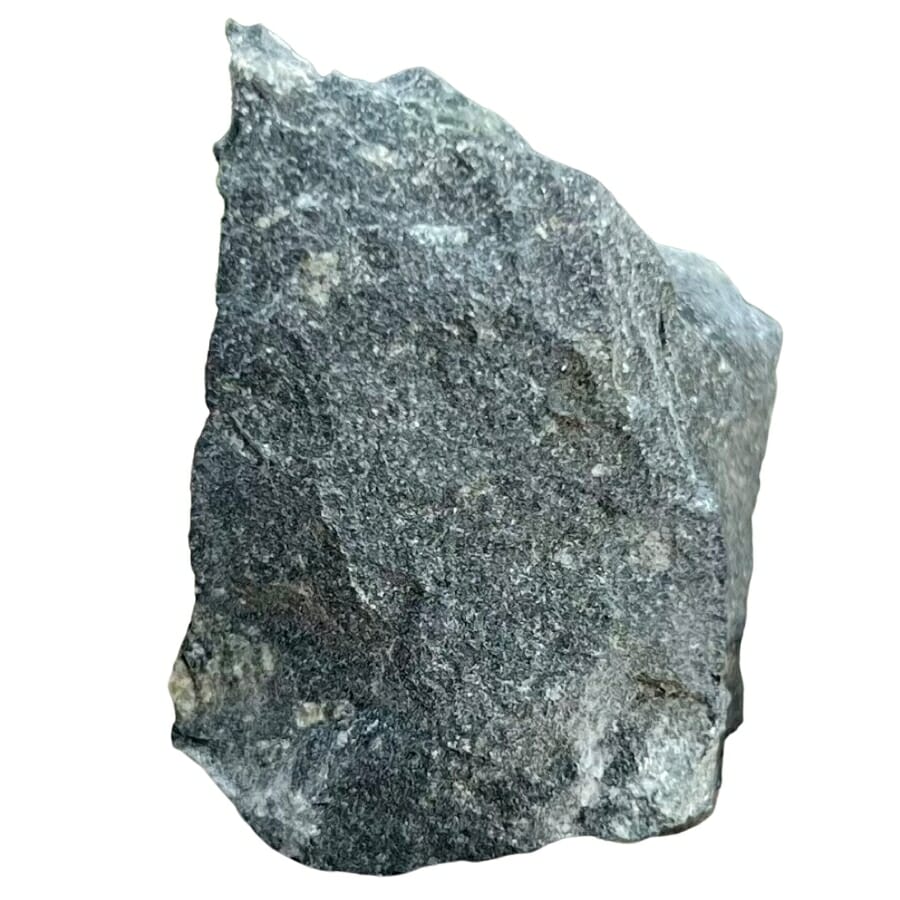
When you look at the texture of a kimberlite rock, it’s like judging a person by how they look. Kimberlite has a distinct look and feel that can help you figure out if it’s real or not.
The rough, sometimes crumbly texture of real kimberlite is one of the first things you notice about it. It’s not smooth like a river rock; instead, it has a rougher, more adventurous look.
Feel the rock’s surface with your hand. Does it feel rough, like sand or grains of something? Well, then, so far, so good! Because it contains minerals from deep in the Earth, real kimberlite often feels like that.
Remember that texture is only one thing to look at. Expert opinions and other tests can help fill in the picture. It’s like getting to know someone better by making more friends with them.
Keep looking at your rock and exploring it, and you’ll soon be a kimberlite detective!
Measure the density
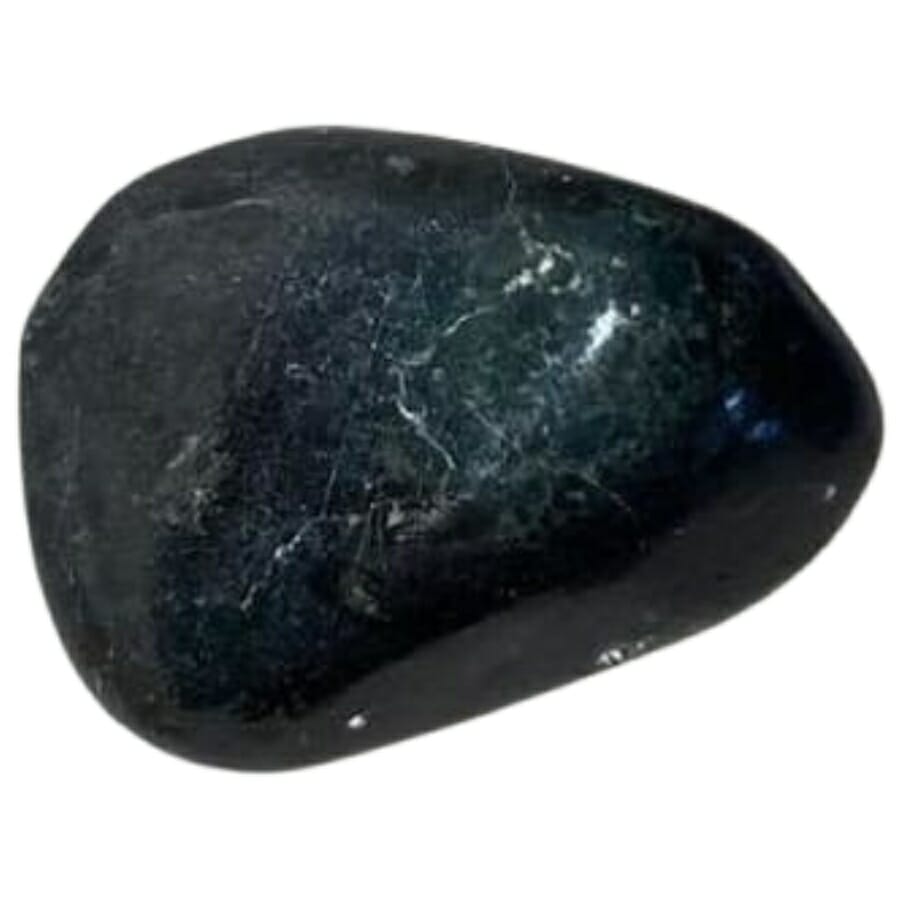
Measuring the density of a kimberlite rock can be an exciting activity, much like a scientist conducting an experiment. Density is how much matter is packed into a certain space, and every type of rock has its own specific density.
For kimberlite, it’s usually around 2.3 to 2.6 grams per cubic centimeter. Now, let’s dive into how you can measure this.
You’ll need a scale to find out how much your rock weighs. Put the rock on a scale and write down how many grams it weighs. Simple, right? Now, for the next part, you’ll need a graduated cylinder full of water that’s big enough to hold your rock.
Drop the rock carefully into the cylinder and watch how much the water rises. This is how loud your rock is! To find the volume in cubic centimeters, write down the new water level and subtract the original water level.
Now it’s time for some math magic. To find the density, divide the weight of the rock by its volume. Density = Mass (weight) / Volume. So, if your rock weighs 260 grams and has a volume of 100 cubic centimeters, its density is 2.6 grams per cubic centimeter.
Comparing the density you found with the known density of kimberlite can give you a clue about whether your rock is real kimberlite or an imposter.
But remember, this is just one clue, so you might want to gather more evidence with other tests to solve the mystery of your rock!
Observe the color
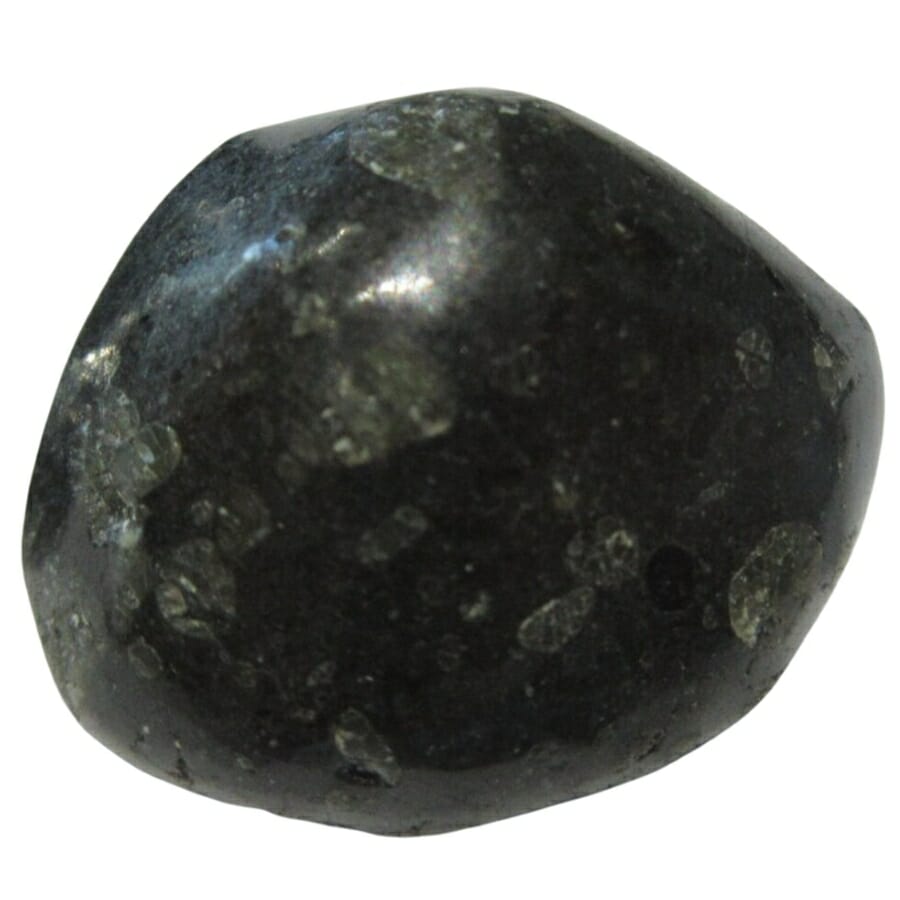
When you look at the color of a kimberlite rock, it’s like looking at a piece of art and noticing all the different shades and hues. Kimberlite is usually a cool range of colors, like greenish, bluish, or gray. These colors show what minerals, like olivine and garnet, are in it.
Find a place with good natural light to see the color well. You can see the colors from different angles if you turn the rock in your hand. It might look different in the sun than in a room, so it’s best to look at it in both places.
You might also want a magnifying glass to look at the rock more closely. This way, you can see the tiny crystals and minerals that give it its color. It’s almost like looking at the details in a painting. These minerals are what make kimberlite look the way it does.
Note the colors that you see. If your rock looks like kimberlite because it has the same colors, that’s a good sign. But the color alone can’t tell if it’s real kimberlite or not.
To get the whole picture, it’s always a good idea to do more tests or talk to an expert.
Test if it is magnetic
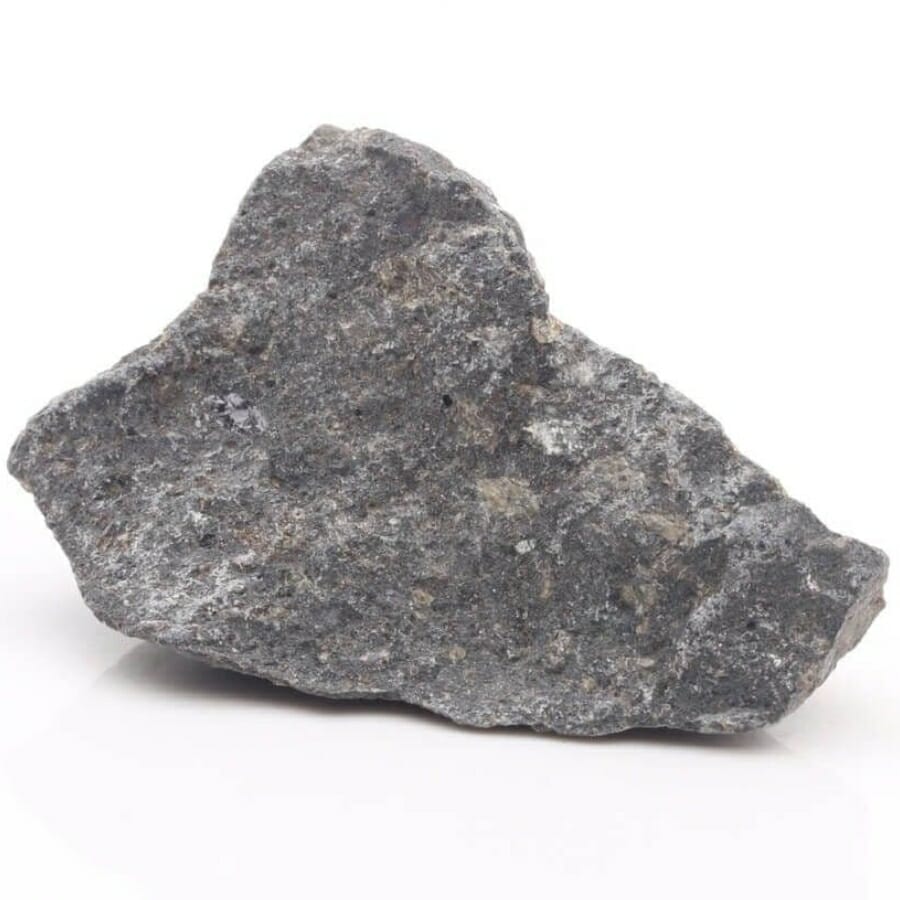
Seeing if a rock like kimberlite is magnetic can feel like a magic trick, but it’s actually science! Kimberlite can sometimes have magnetic minerals in it, which makes this test fun and useful. Here’s how it works:
Get a strong magnet. A magnet from your fridge might work, but a stronger one would be better. Now, bring the magnet close to your kimberlite rock and see if there is any attraction.
If the rock has magnetic minerals, it will feel like the magnet is pulling or sticking to it, which is pretty cool to feel.
You can also move the magnet around the rock to see if there are any spots where it seems to stick better. There might be more magnetic minerals in some parts of the rock than in others. It’s like playing hot and cold with the magnet and the rock!
Don’t forget that this test is fun, but it won’t give you a clear answer. Some real kimberlites might not react strongly to a magnet, but other rocks might.
You might need to do more tests to be sure that your rock is a real kimberlite or not. So, keep looking into and learning about your rock!
The Different Types Of Fake Kimberlite And What They Look Like
When we look at rocks, we can sometimes find fake kimberlites mixed in with the real ones. These fakes can look different and often have the same rough and unique texture as real kimberlite.
Some common types of fake kimberlite are rocks like serpentine, lamproite, and peridotite, which look like real kimberlite but don’t contain as many diamonds.
Through learning and observation, we can become rock detectives, ready to spot the fakes and find the real gems!
Basalt
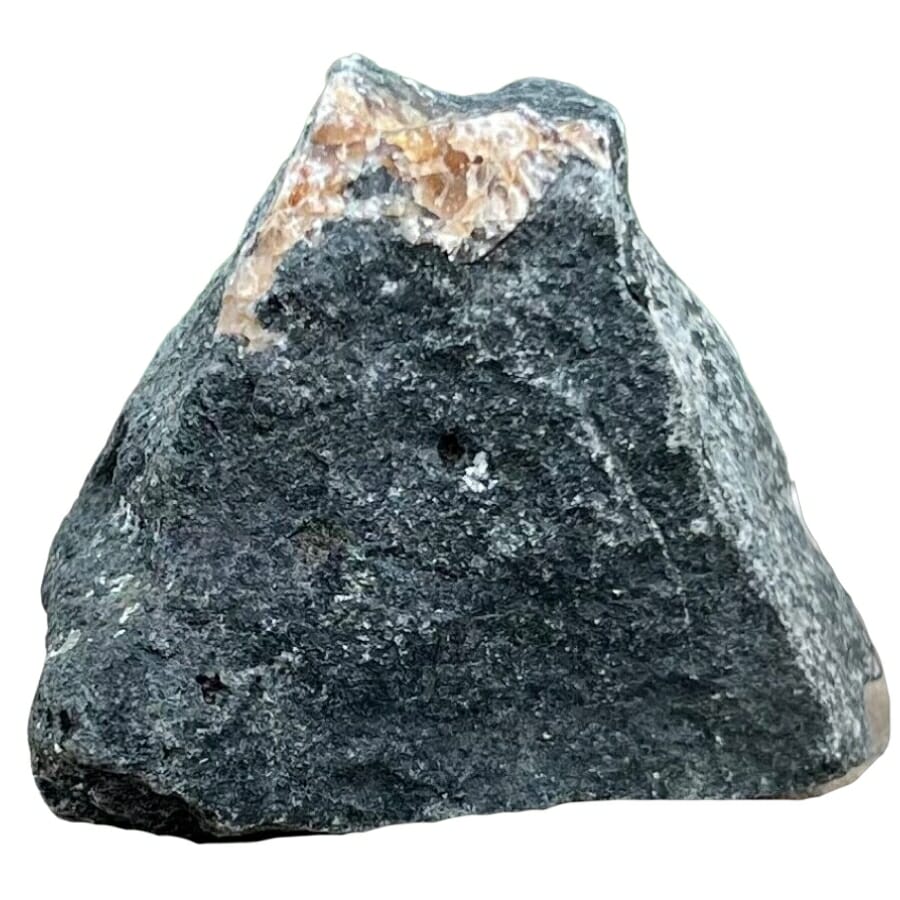
Basalt and kimberlite are both rocks, but they come from different parts of the Earth and have different histories. Basalt is made when lava at the surface of the Earth quickly cools down after a volcanic eruption.
It’s usually black or dark gray and smooth, unlike kimberlite, which is rough and sometimes crumbly. Kimberlite is known for having diamonds in it sometimes, so it can be worth a lot of money.
Some people might try to cheat others out of money by selling basalt as kimberlite. They could change the basalt in some way to make it look more like kimberlite. For example, they could paint it or mix it with other things to change its color and texture.
Basalt is a useful rock in and of itself. It’s often used to build things like roads, and it can also be ground up and mixed with soil to help plants grow.
But when it’s sold as kimberlite, it’s a sneaky trick that can make people think they’re getting something really special when they’re actually getting a common volcanic rock. It’s important to know the differences so we don’t fall for the trick!
How you can identify “basalt” being sold as real kimberlite
Check mineral content
Kimberlite has a unique look because it’s made up of different minerals, like garnet and olivine. On the other hand, basalt has a different mix of minerals, which usually includes plagioclase and pyroxene. If you can, having an expert look at the minerals can help you figure out if it’s really basalt that’s being passed off as kimberlite.
Color examination
Kimberlite is usually green, blue, or gray because of the minerals it contains. Basalt, on the other hand, is usually black or dark gray. By looking at the colors, you can get an idea if a rock being sold as kimberlite might actually be basalt.
Texture analysis
Kimberlite is rough and sometimes crumbly, but basalt is usually smoother and more solid. Based on how the surface feels, you might be able to tell if it’s basalt instead of kimberlite if you look at it more closely or touch it.
Diorite
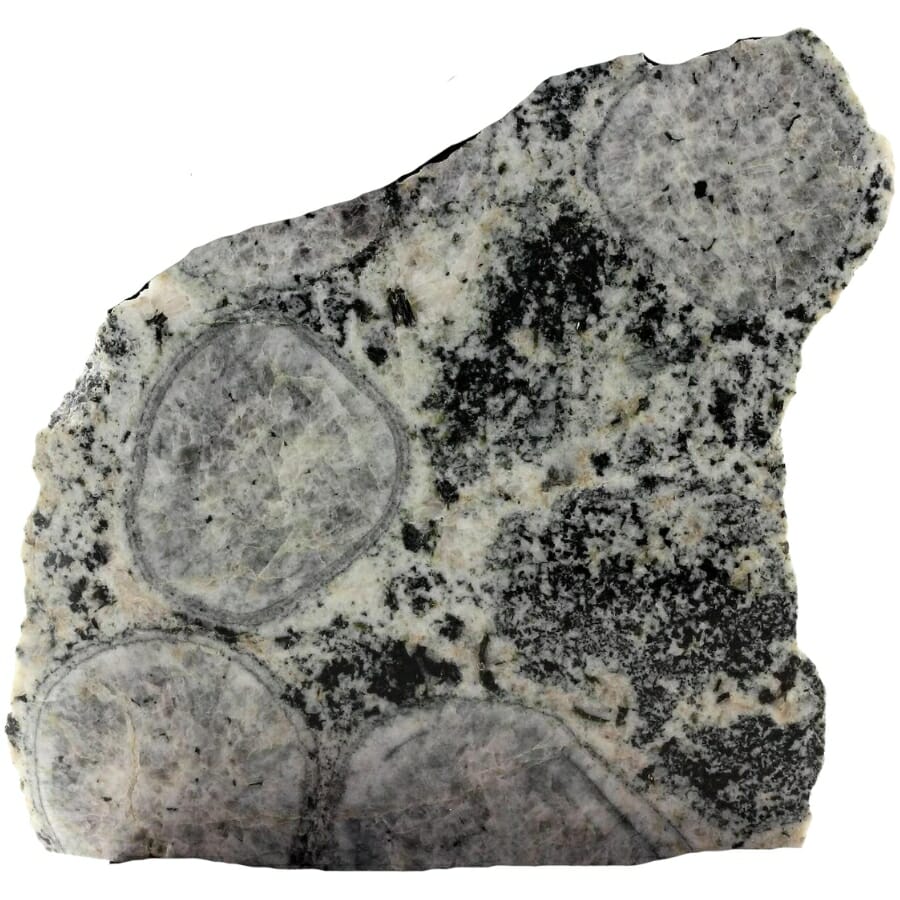
Diorite is a type of rock that is made when magma slowly cools down below the surface of the Earth. Unlike basalt, which cools quickly, diorite takes a long time to cool down.
This means that bigger crystals can form, giving it black, white, and gray spots. It has a unique look, kind of like polka dots made by nature.
Now, onto the disguise game. Some might try to sell diorite as kimberlite, which is known to sometimes hide diamonds within. Though they don’t look much alike, with a bit of makeup, diorite could be dressed up to look more like kimberlite.
This might involve painting it, or even mixing in other materials to get the rough texture of kimberlite.
In reality, diorite has its own uses and benefits. For example, it can be used to make strong, long-lasting building materials. But when it tries to pass itself off as kimberlite, things get complicated.
It’s like diorite is going to a party dressed up as the more popular kimberlite to try to fool everyone. If you can tell them apart, you won’t be fooled by their disguises, and you’ll know when you see the real thing.
How you can identify “diorite” being sold as real kimberlite
Check for acid reaction
Diorite and kimberlite may react to acid in different ways. An expert can use a simple acid test to figure out if the rock is diorite or kimberlite.
Density test
Because they are made of different minerals, diorite and kimberlite are not the same density. If diorite is being sold as kimberlite, a density test could help find it.
Do a hardness test
Diorite is harder than kimberlite, so using a nail or other tool to test how hard a rock is can help figure out what kind of rock it is. Diorite could be the rock if it’s very hard.
Lamproite
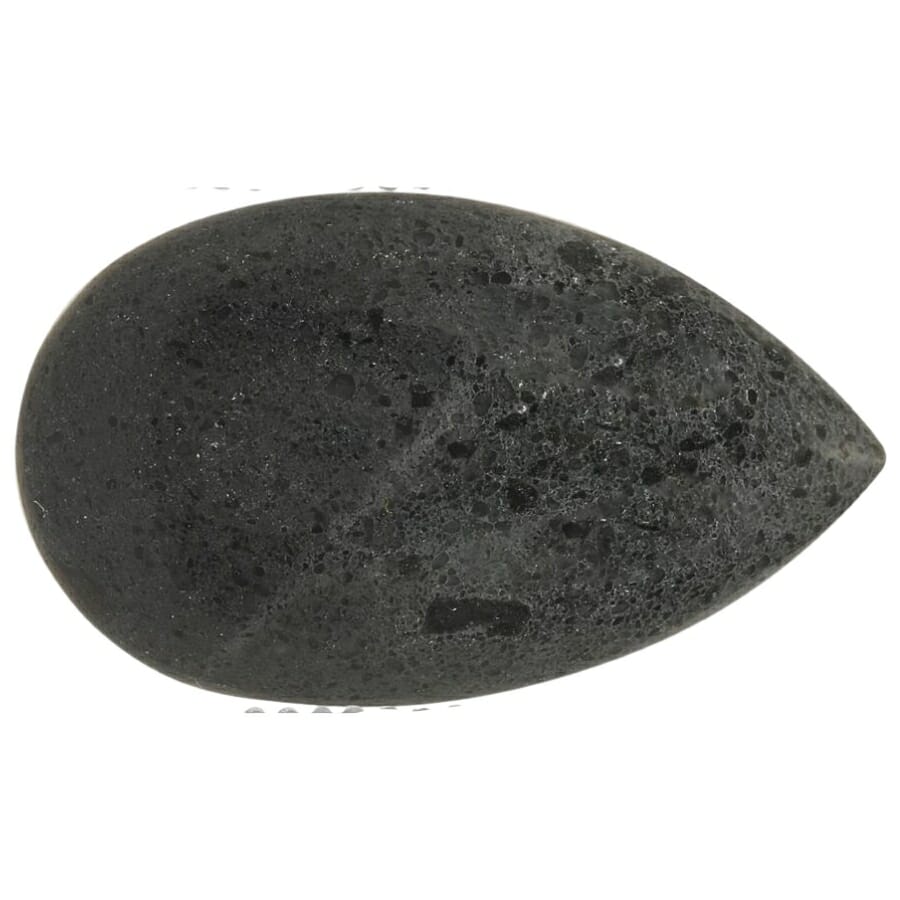
Lamproite is an interesting rock that forms deep in the Earth, where it is very hot and very hard. When the Earth decides it’s time, this molten rock makes its way up to the surface, where it cools and hardens into what we call lamproite.
It can look a bit like kimberlite, with a mix of colors and textures that is interesting to look at.
Now, onto the sneaky part. Since kimberlite is known for sometimes having diamonds in it, some people might try to pass off lamproite as kimberlite to make some extra money.
They might try to make it look a little more like the real thing by roughing it up or adding a bit of color here and there. Lamproite has some cool uses and properties on its own, but when it’s dressed up as kimberlite and sold as such, it’s a trick.
Knowing what makes kimberlite different from lamproite will help you not fall for a rock in disguise and appreciate each rock for its own cool history and qualities.
How you can identify “lamproite” being sold as real kimberlite
Color observations
Kimberlite is usually green, blue, or gray, while lamproite can be brown, pink, or greenish, but in a different shade. By looking at the colors, you can tell if someone is selling lamproite as kimberlite.
Evaluate the texture
Kimberlite is rough and sometimes crumbly, but lamproite may feel smoother. If you look at the rock’s texture, you might be able to tell if it’s lamproite or kimberlite.
Magnetic response
Some of the minerals in kimberlite may react to a magnet, but lamproite may not. Putting a magnet on the rock and seeing how it moves can give you a clue.
Peridotite
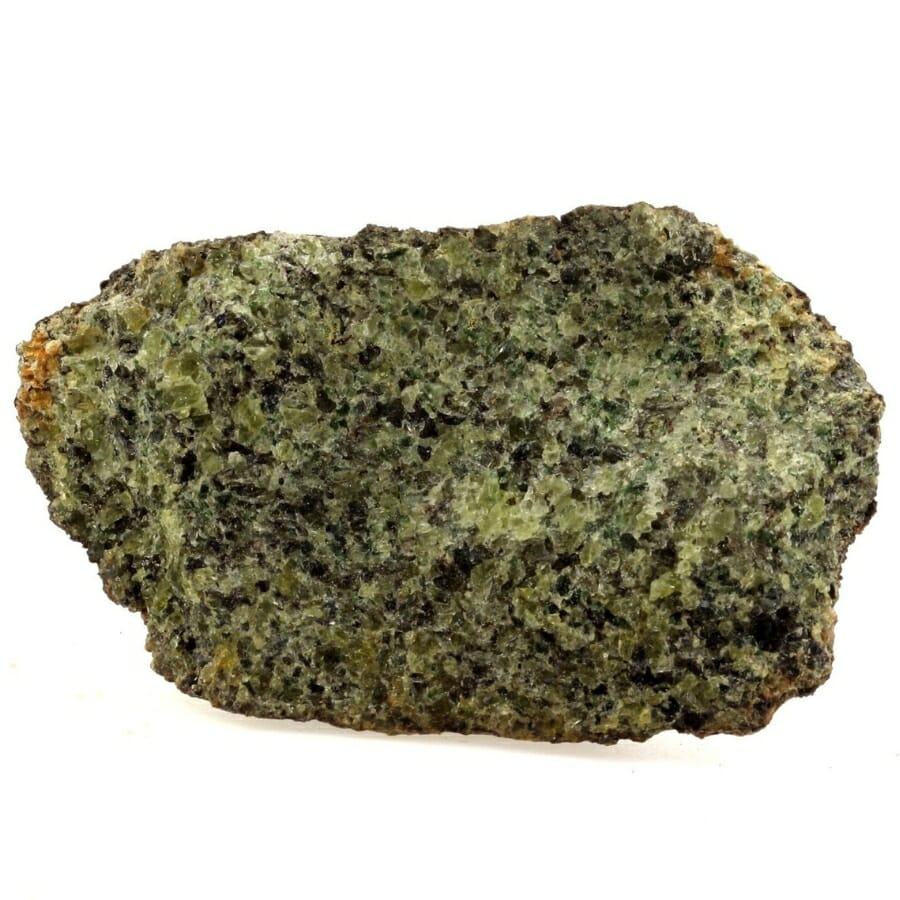
Peridotite is a cool rock that gets its start in the mantle, which is a layer deep inside the Earth. Peridotite is formed when molten rock from the mantle slowly cools and hardens over a long, long time.
The green and yellow minerals in this rock make it look like a bunch of green and gold confetti. Now, some people might notice that peridotite and kimberlite look a little bit alike.
Since kimberlite is known for sometimes hiding diamonds, they might try to sell peridotite as kimberlite. They could make the peridotite rougher or slightly change its color to make it look more like kimberlite and get people to pay more for it.
Geologists can learn a lot about the inside of the Earth from peridotite, which gives it its own value. But when it acts like kimberlite, it’s being something it isn’t, which isn’t fair to anyone.
When you know the real story behind each rock, you can look past its disguise and see how cool it really is.
How you can identify “peridotite” being sold as real kimberlite
Inspect mineral content
Kimberlite is made up of minerals like garnet and olivine, while peridotite is mostly made of olivine. If you look closely at the minerals, you might be able to figure out what kind of rock it is.
Measure the density
Because of the different minerals they are made of, peridotite and kimberlite can have different densities. If the rock is peridotite instead of kimberlite, a density test can help figure out what kind of rock it is.
Observe grain size
Compared to kimberlite, the grains in peridotite tend to be bigger and easier to see. You might be able to tell if it’s peridotite by looking at the size of the grains.
Serpentine
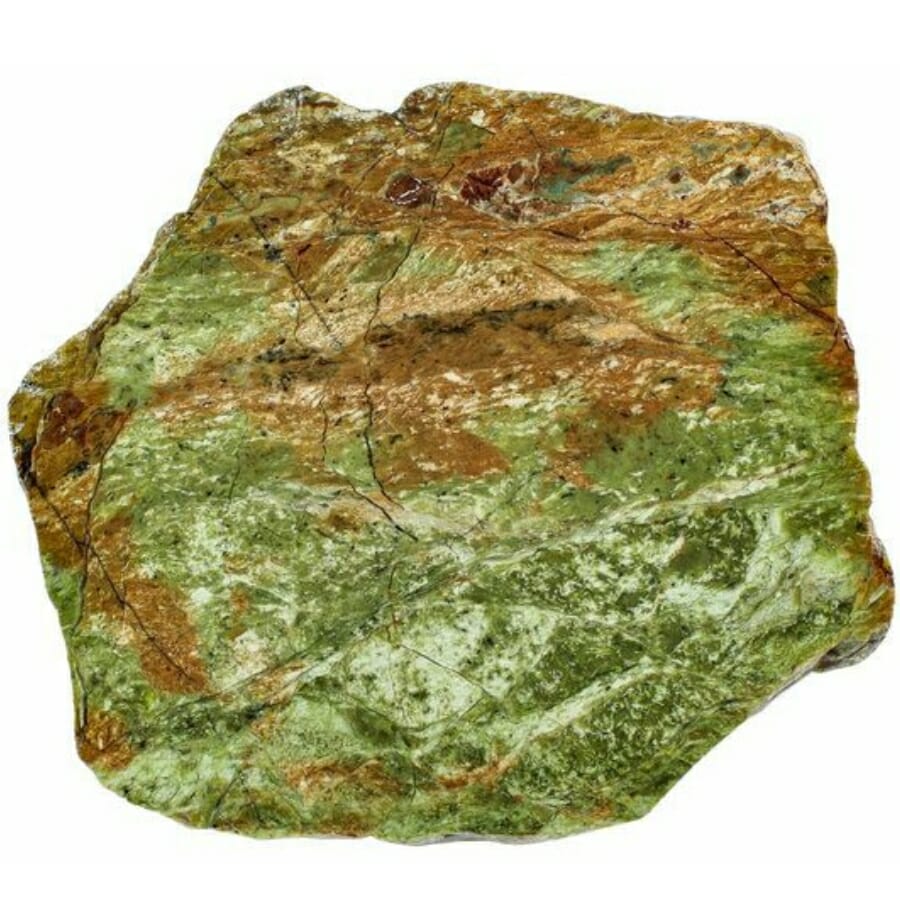
Serpentine rocks have a neat origin story; they are formed when water and certain minerals mix with other types of rocks deep within the Earth.
This reaction changes the original rock into what we call serpentine, which has a waxy or sometimes silky look and can have a greenish, black, or yellowish color.
Some people might see the chance to make more money by selling serpentine as the more valuable kimberlite, which is known for sometimes having diamonds.
They might try to roughen up the serpentine or alter its color to make it resemble kimberlite more closely, tricking buyers into thinking they’ve found the rarer rock.
Although serpentine has its own unique beauty and uses, like carving beautiful statues or for decoration, when it’s pretending to be kimberlite, that’s not cool.
It’s like serpentine is wearing a costume to trick people, and knowing the true identity of the rocks helps you to appreciate them for what they really are and not fall for the disguise!
How you can identify “serpentine” being sold as real kimberlite
Check the translucency
Some serpentine rocks can be slightly translucent when held up to light, unlike kimberlite. Checking the rock’s translucency can provide a clue to its true identity.
Examine the pattern
Serpentine may show unique patterns or bands on its surface, which are not typical for kimberlite. Observing the patterns can help identify serpentine being sold as kimberlite.
Perform a hardness test
Serpentine is generally softer than kimberlite. You can try scratching the rock with a nail or coin to test its hardness and identify if it’s serpentine.
How To Tell If Kimberlite Is Real Vs Fake
You can tell if a piece of kimberlite is real or not by looking at how it is made. By looking for these things, you can be sure that your gem is real and can enjoy the real beauty and value of a real kimberlite.
How To Identify Fake Kimberlite When It’s Cut Or Polished
Diving into the world of rocks and minerals is like going on a treasure hunt. Among the treasures, kimberlite stands out as it sometimes contains diamonds.
However, distinguishing real kimberlite from fake, especially when it’s cut or polished, requires a keen eye and knowledge of certain characteristics, to make sure you’re on the right path in your rocky adventure!
Color examination
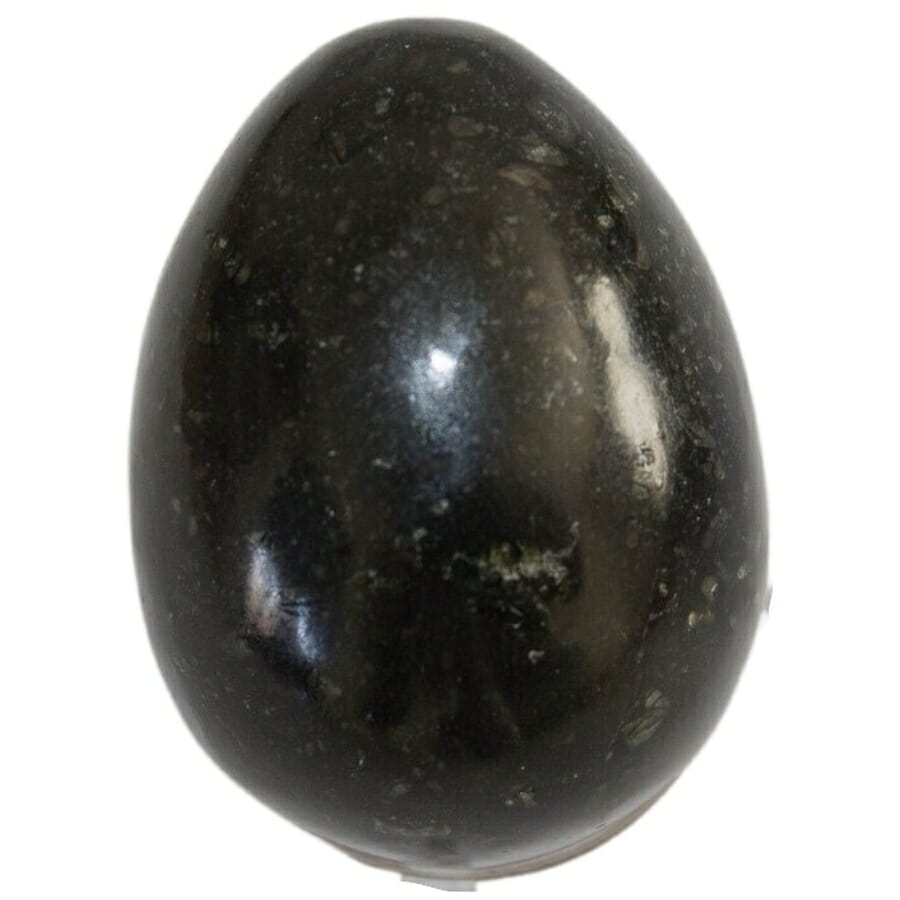
Once kimberlite has been cut or polished, it can be harder to tell what it is, but if you have a good eye, you can still do it. Even when Kimberlite is all cleaned up, its unique color scheme still stands out.
It usually has a dark gray to greenish-black color that makes it stand out from other rocks. Now, if someone wants to sell fake kimberlite, they might change the colors of other rocks to look like the colors of kimberlite.
They might use dyes or treatments on the surface to make it look like something else. But if you put on your detective hat, you’ll notice that these fakes might not have the same colors as real kimberlite, or the colors might be too even and perfect.
Getting a good picture of real kimberlite from a book or a reputable website is a useful trick. Having that picture with you as you look at the cut or polished rock will help you compare and see if there are any differences in color.
You can also talk to experts or clubs who know about rocks and minerals. They may be able to help you on your quest to compare colors. The more you look at kimberlite and compare it to other things, the better you’ll get at solving the color puzzle.
Evaluate its luster
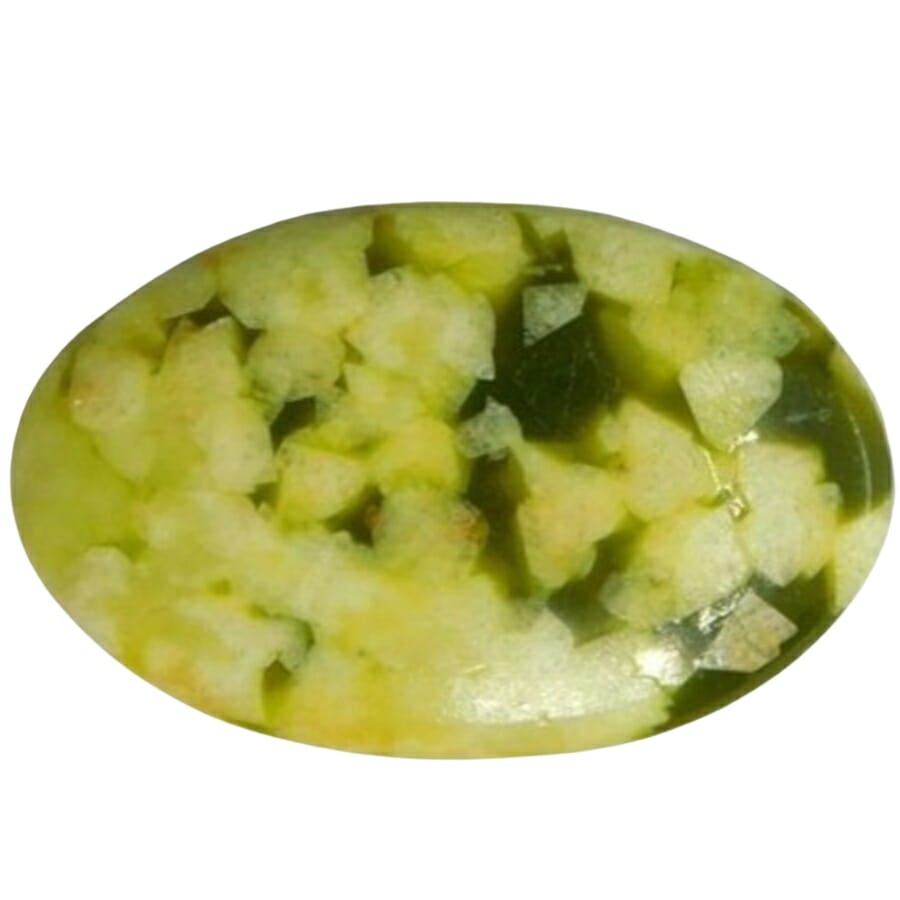
When you look at a rock’s luster, or how it shines in the light, it’s like you have a small window into who it is. People often use words like “greasy” or “waxy” to describe the shine of real kimberlite.
When kimberlite is cut or polished, it might shine a little brighter, but it still has that shine that makes it stand out.
When people try to make other rocks look like kimberlite, they might not get the shine right. They might look too shiny or too dull, like glass. Kimberlite has a unique shine that looks oily or waxy. The fakes might not be able to copy that.
Look at your rock under different lights, like sunlight or a lamp, and compare it to pictures of real kimberlite or, even better, a real piece of kimberlite if you have one. Look at how the light reflects off of it.
Does it shine as much as real kimberlite does? Or does the light look different? Remember that in the big picture of identifying rocks, every little detail matters.
The more closely you look, the more likely you are to figure out if you have a real kimberlite or a fake that looks like one.
Observe the pattern
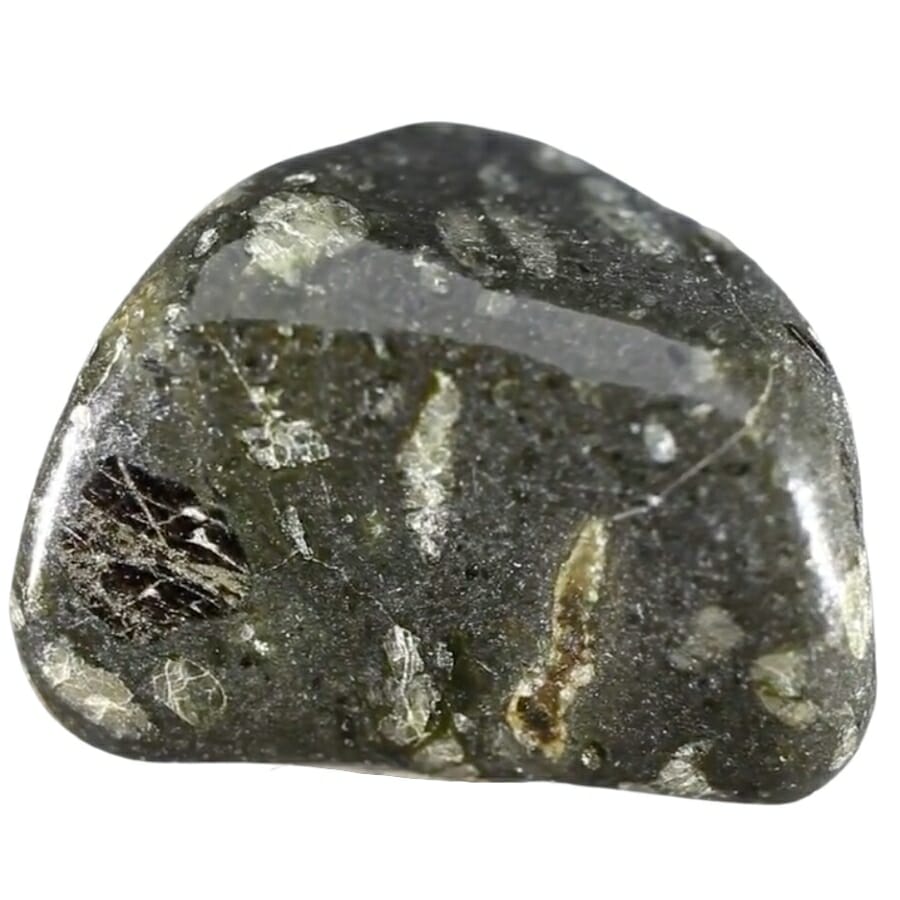
Patterns in rocks can be like fingerprints in that they can help you tell them apart. Kimberlite often has a mottled pattern of different colors and textures when it is cut or polished.
This mix might look a little bit random, with spots of gray and greenish-black color all over. But rocks that try to be kimberlite might not get this pattern exactly right.
Patterns on fake kimberlite might be too perfect, with dots or swirls that are all in the same place. Or the colors might look fake, like they were painted on.
If you have a magnifying glass, use it when you play rock detective. Look at the patterns closely and compare them to pictures of real kimberlite from reputable sources.
Look at how the real thing has a strange mix of colors and textures. If the pattern looks wrong or too made, that could be a sign that it’s a fake.
By learning to read the patterns’ “fingerprints,” you’ll be one step closer to figuring out if it’s real kimberlite or not.
How To Identify Fake Kimberlite When It’s Raw
Discovering whether a raw rock is a genuine kimberlite or a fake requires a blend of observation and knowledge. Kimberlite has a unique cocktail of characteristics including its color, texture, and other physical properties that set it apart from imposters.
Embarking on this rock-detective adventure, you’ll unravel the clues that raw kimberlite shares, to distinguish the real deal from the fakes lurking in the shadows.
Check the color
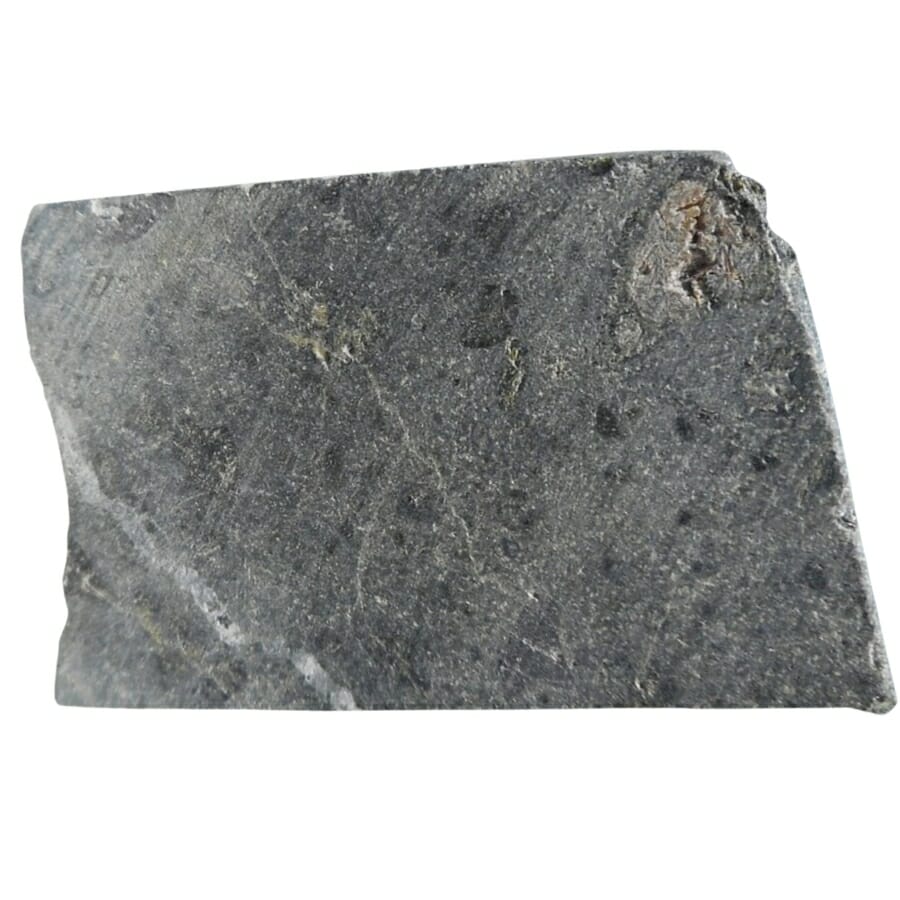
Checking the color of a raw rock is an interesting way to tell if it is a real kimberlite or not. Kimberlite is usually a dark, exciting color that is usually described as greenish-black to dark grey.
It looks like nature’s art, with a soft mix of colors that look even more beautiful in the sun. Now, if someone wants to sell a fake piece of kimberlite, they might use dyes or other tricks to make it look like the real thing.
The problem is that they often miss the mark. The color might look off, like it’s too bright, too dark, or doesn’t have the rich depth of real kimberlite.
You can become a color detective if you have a good picture or, even better, a real piece of kimberlite to compare with. Compare the rock to others by looking at it in natural light.
Also, taking it to a local gem or rock club for an expert’s opinion can be like having more eyes on the case. The real color of kimberlite will stand out more against the fakes the more you look and compare, getting you closer to the truth.
Do a magnetic test
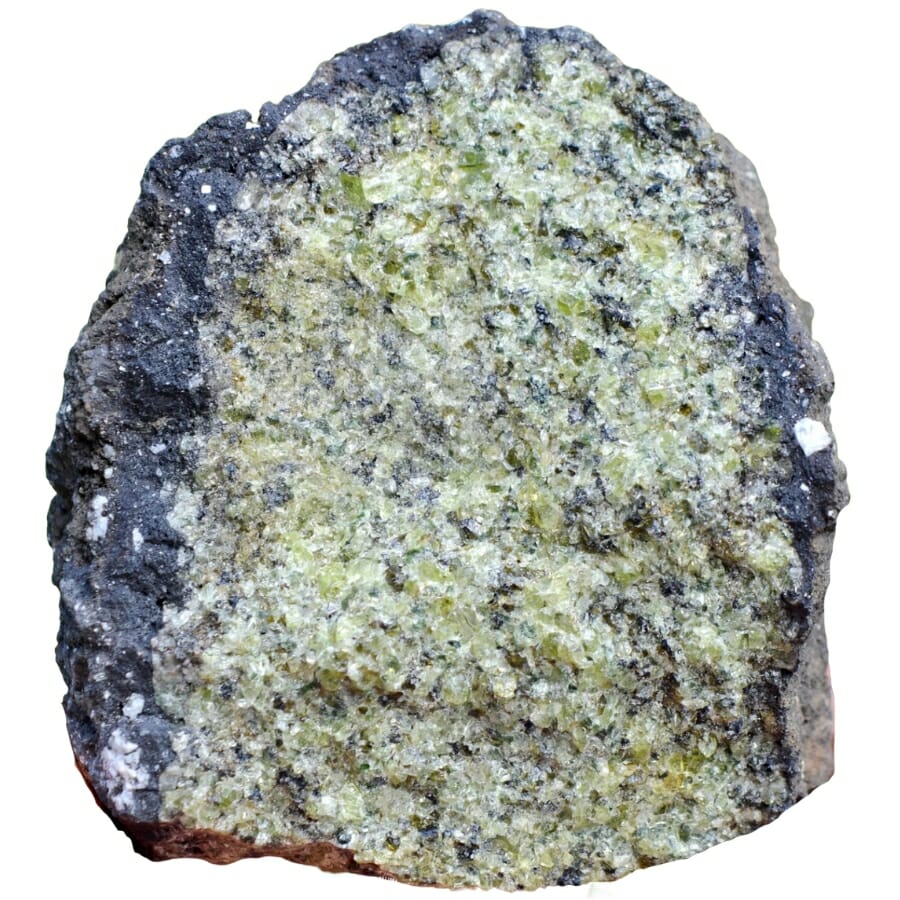
A magnetic test is like a fun little detective game you can play with rocks. Some magnetic minerals can be found in kimberlite, but the rock is usually not very magnetic.
You’ll need a strong magnet to start your study of magnetism. A simple fridge magnet might not be strong enough. A neodymium magnet, on the other hand, would work better.
Now, put the magnet close to the rough rock that you think might be kimberlite. If the rock jumps to the magnet or sticks to it strongly, that could be a sign that it’s fake. If real kimberlite had any attraction at all, it would be very small.
This magnetic test doesn’t tell you everything because there are other things that can change the results. But it’s a cool experiment that is easy to do anywhere.
Make sure to do it along with other tests, like looking at the color and texture, to find out more about whether you’re holding a real kimberlite or a fake one.
Texture analysis
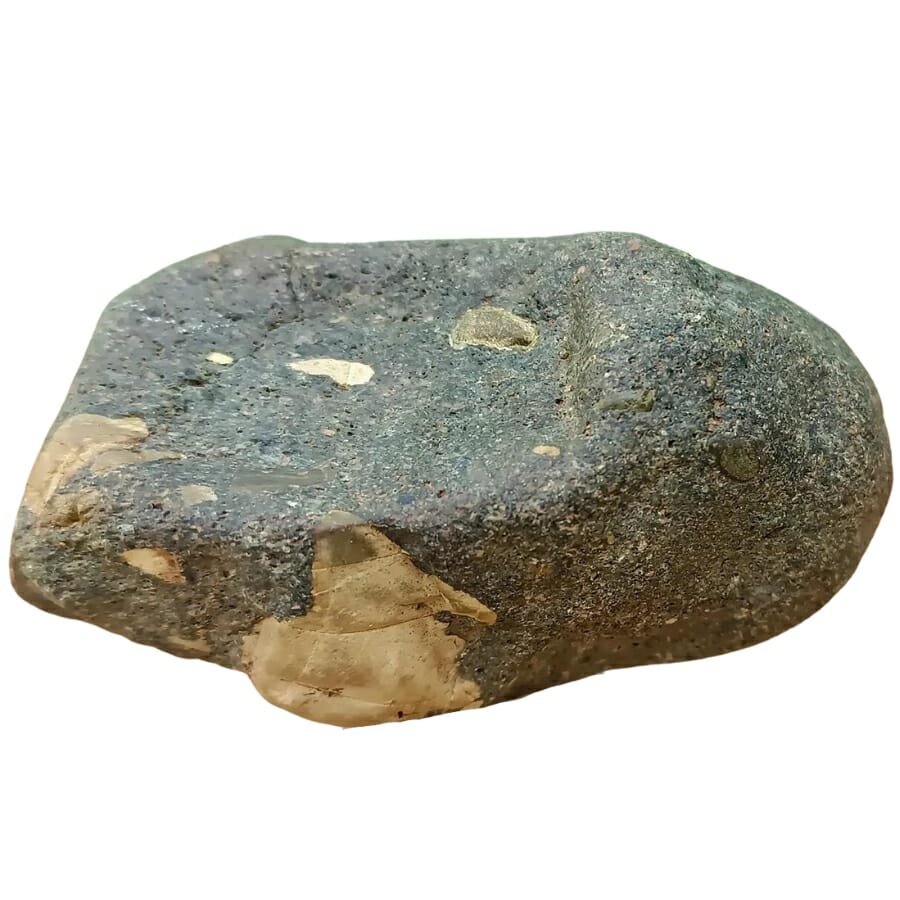
The texture of a rock is like its skin; it shows what it’s made of and how it was formed. Kimberlite is different from other rocks because of the way it feels.
It often feels rough, and the surface can feel interesting, bumpy, and sometimes even a little gritty.
Now, get ready to use your hands to find out if a raw rock is a fake kimberlite. Feel the texture with your fingers and compare it to pictures or descriptions of real kimberlite you can find in books or online.
Real kimberlite has a personality, with a mix of small mineral grains and sometimes larger, rounded olivine crystals that can feel exciting when you touch them.
Some fake kimberlites try to copy this texture, but most of the time they fail. They might feel too smooth, too rough, or just not the same as the real thing. They might not have the unique mix of mineral pieces that real kimberlite has.
Trying to figure out what something feels like is a tactile adventure that helps you find clues. It’s one of the things you have to do to find out what’s hidden in the rock you’re looking at.

